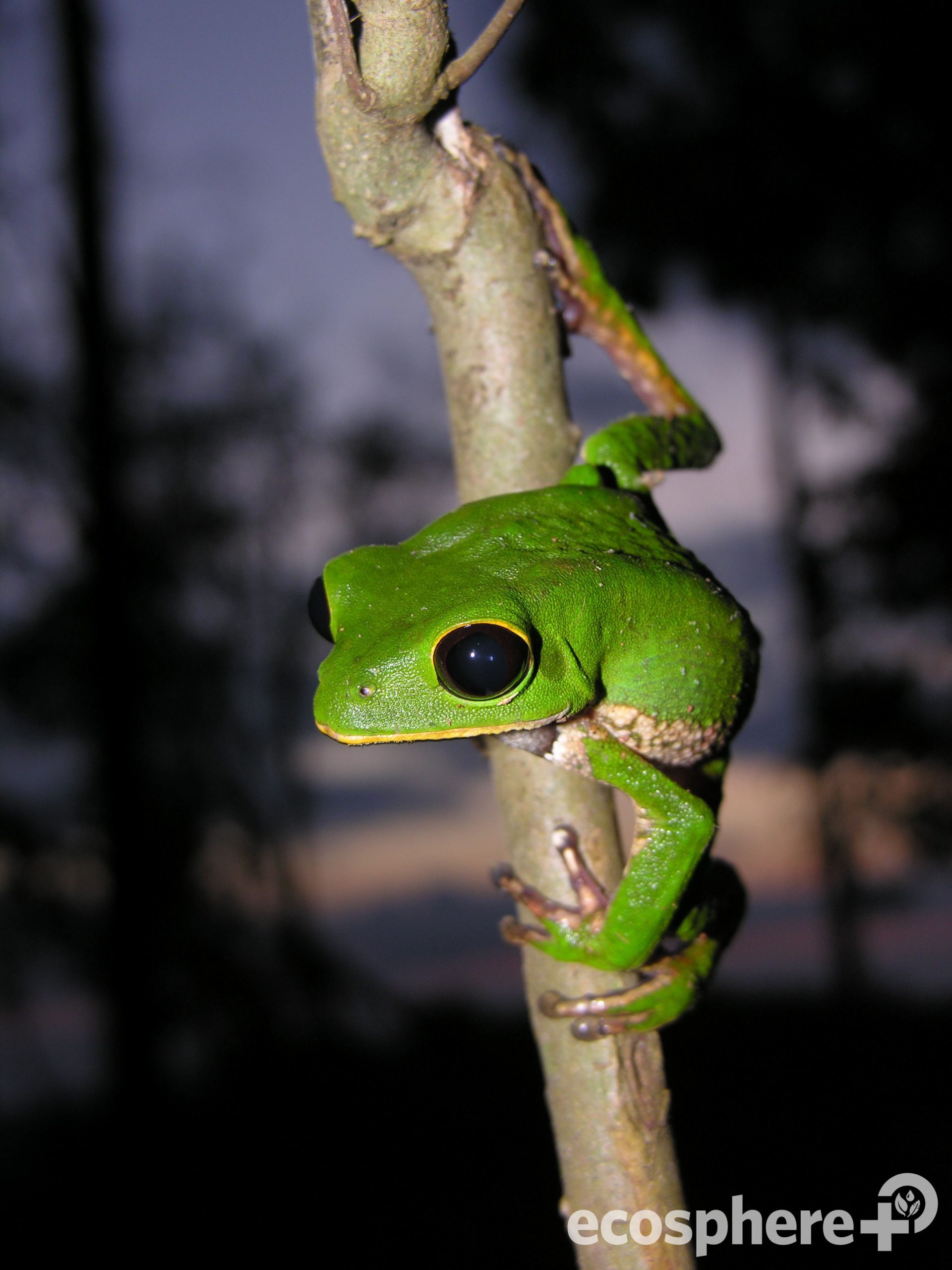The Cordillera Azul project in Peru, one of the world’s original REDD+ projects, is well known for the vast landscape of lush, Amazonian rainforest it protects, covering a total of more than 1.3 million hectares in the tropical Andes. Within the project zone, which spans high mountain tops and sparkling lagoons, numerous activities work to protect critical biodiversity and support the multi-cultural population that lives here. One of the most fundamental aims of the project is to better understand, monitor and conserve Cordillera Azul’s wealth of unique and rare species.
A range of habitats
A variety of different habitat types are encompassed by the project, from lush lowland forests and rugged sandstone ridges to mountain forests and rare geologic formations. The project zone even ranges from wetlands at 150 metres to mountain peaks at 2,400 metres. This diverse landscape gives life to an incredible array of species. The project area is home to a striking abundance and richness of more than 120 species of mammals. Over 800 species of birds have been recorded in the project area, including the Scarlet-banded Barbet which is unique only to a single range of cloud forest within the Cordillera Azul National Park. In addition, over 110 species of amphibians and reptiles and more than 43% of the palm species known in Peru are protected by this expansive landscape.
 Endemic and threatened species
Endemic and threatened species
A significant number of species here are endemic, threatened or near-threatened, making the conservation of this landscape of critical importance. In the tropical andes as a whole, 45,000 plant and 3,400 vertebrate species represent roughly 15% and 12% of the world’s plant and vertebrate diversity, respectively. Colonisation and intensive agriculture in the region has led to a substantial lossof habitat and today, many Andean species are threatened or endangered. In fact, within the project zone, 39 species have been identified as threatened with extinction by the IUCN, including the spectacled bear, jaguar, blue-headed macaw and giant river otter. The Atelopus Pulcher frog – considered critically endangered – has been discovered in the project area, and is unique as an endemic species to this part of Peru.
Activities to conserve biodiversity
The main threats to this landscape and its species are a result of the area’s nature as a highly productive region in Peru, where cacao, coffee, and palm oil production drive economic activity and migration into the area, leading to deforestation and forest degradation, illegal logging, cattle ranching, ‘slash and burn’ and illicit agriculture and infrastructure development. Project activities therefore focus on creating a market for sustainable alternative livelihoods within the buffer area of the park, promoting economic activities that nurture the responsible use and management of forest resources, and therefore reduce pressure to push further into the forest for sustenance and income.
 To monitor biodiversity health and presence in the project zone, staff focus closely on sensitive game animals like tapir, deer, curassow, monkeys and big carnivores that indicate overall ecosystem health. Regular observations by park guards, either sightings or of tracks, along with routine patrol routes around 18 control posts and park guards’ centres work to maintain an accurate and up-to-date picture of biodiversity levels. Information is collected on the key species, number of individuals, trails and locations, habitat types, and weather conditions surrounding biodiversity monitoring, with all park guards trained to identify and correctly report flora and fauna encountered on their patrols. This is a process that is critical to the project, and continues to evolve based on results and feedback from park guards.
To monitor biodiversity health and presence in the project zone, staff focus closely on sensitive game animals like tapir, deer, curassow, monkeys and big carnivores that indicate overall ecosystem health. Regular observations by park guards, either sightings or of tracks, along with routine patrol routes around 18 control posts and park guards’ centres work to maintain an accurate and up-to-date picture of biodiversity levels. Information is collected on the key species, number of individuals, trails and locations, habitat types, and weather conditions surrounding biodiversity monitoring, with all park guards trained to identify and correctly report flora and fauna encountered on their patrols. This is a process that is critical to the project, and continues to evolve based on results and feedback from park guards.
This system of evaluation and monitoring is a key success of the Cordillera Azul National Park project, and has set an example of the importance of monitoring to ensuring effective REDD+ projects. Critically, by tracking the health of these ecosystems, the project can better understand how certain activities are contributing to the conservation of the project zone and how to adapt and change to ensure high-quality protection of a landscape that cannot be lost.
See here to find out more about the Cordillera Azul National Park project, and contact us to learn about our portfolio of natural climate solutions projects and how we work with our clients to help them achieve their climate and biodiversity targets.
